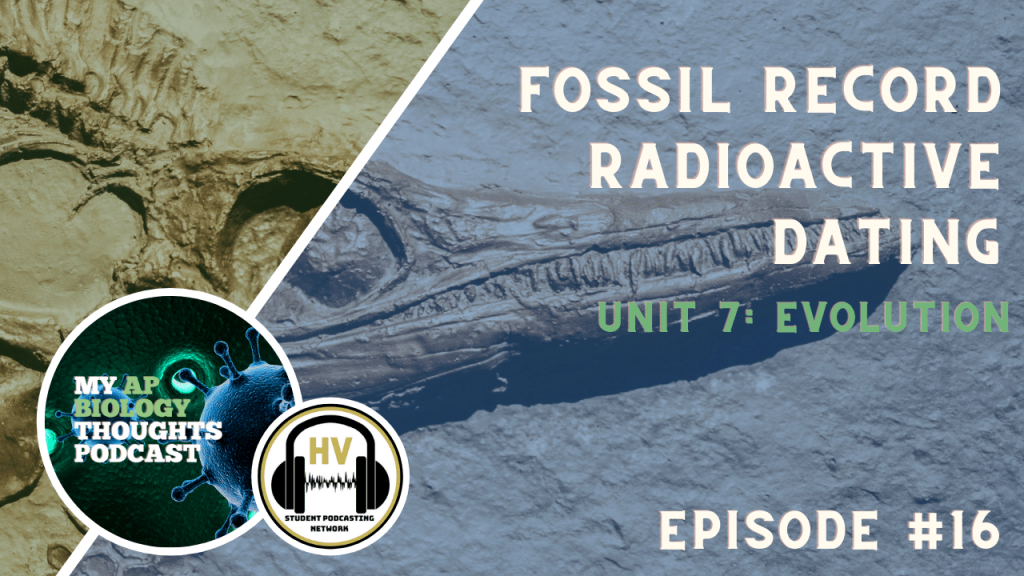Fossil Record and Radiometric Dating

My AP Biology Thoughts
Episode # 16
Welcome to My AP Biology Thoughts podcast, my name is Arthur and I am your host for episode 16 called Fossil Record Radioactive Dating. Today we will be discussing the techniques used to precisely determine the age of fossils.
Segment 1: Introduction to Fossil Record Radioactive Dating
- A powerful tool that scientists can use to precisely determine the age of samples is radioactive dating.
- Exponential decay: The amount of a substance decreases in proportion to its current value.
- Half life: A constant amount of time for the amount of the remaining sample to halve.
- Carbon 14: A naturally-occurring radioactive isotope of carbon present in small quantities in all organisms. It has a half life of around 5700 years.
Segment 2: Example of Radiometric dating
- Since all living organisms are constantly exchanging carbon with the environment, an organism will have around 1 C-14 atom per 1 trillion carbon atoms. Once an organism dies, it stops exchanging carbon with the environment, so the amount of C-14 remaining in the organism will exponentially decay. By observing the amount of C-14 remaining and comparing it to the established baseline amount, we can calculate the age of samples. For example, if we had a tissue sample with an observed C-14 concentration of one per 4 trillion carbon atoms, as that is a quarter of the original amount, we know that two half lives have elapsed, meaning the sample is around 11400 years old. We were able to determine that the preserved “Ice Man” is around 5300 years old via this method. The amount of carbon-14 had to have been 1 atom per 1.9 trillion carbon atoms.
Sources: https://www2.lbl.gov/abc/wallchart/chapters/13/4.html
Segment 3: Digging Deeper with Radiometric dating
- How does this topic fit into the greater picture of evolution?
- By being able to accurately date ancient samples, we can create temporally accurate phylogenetic trees, allowing us to better understand organisms’ ancestry and evolutionary relationships.
Thank you for listening to this episode of My AP Biology Thoughts. For more student-ran podcasts, make sure that you visit www.hvspn.com. Thanks for listening!
Music Credits:
- “Ice Flow” Kevin MacLeod (incompetech.com)
- Licensed under Creative Commons: By Attribution 4.0 License
- http://creativecommons.org/licenses/by/4.0/

